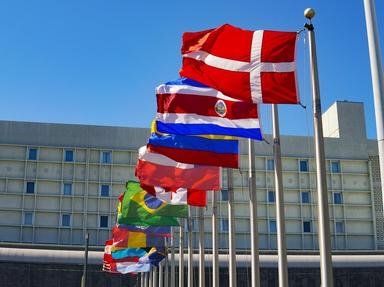Quiz Answer Key and Fun Facts
1. What is the English name for the archipelagic nation in the northern Pacific Ocean which is nicknamed "The Land of the Rising Sun"?
2. Which is the only country in the world described as being in all four cardinal hemispheres of the globe?
3. Which country in southern Asia, which used the flag shown, was once part of the British Empire?
4. What mountainous landlocked country in central Asia, situated on the ancient Silk Road, started to fly this flag in 1992?
5. To see this flag on public display, you will need to travel to the world's largest landlocked country. Located partly in Europe and mostly in Asia, which of these will you be visiting?
6. In 1964 the colony of Nyasaland became independent, and adopted this flag along with what name for the new nation?
7. Although Columbus explored the largest island in this Caribbean nation in 1493, it was actually colonized by the British in 1632. What nation started using this flag in 1967, to mark the achievement of self-government?
8. In 1930, in which South American country was the first FIFA World Cup played?
9. The second-largest country in South America has the Sun of May in the middle of its national flag. Which country is this?
10. In what country was this flag, representing the indigenous people, authorized in 1995 to fly alongside the national flag selected when the British colony became an independent nation in 1901?
Source: Author
looney_tunes
This quiz was reviewed by FunTrivia editor
stedman before going online.
Any errors found in FunTrivia content are routinely corrected through our feedback system.

